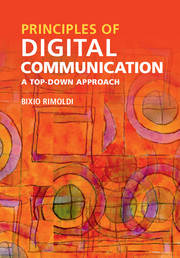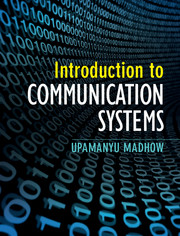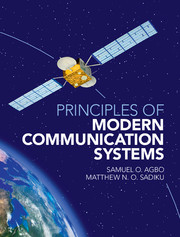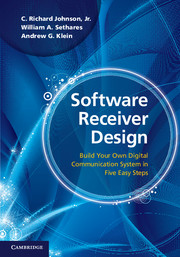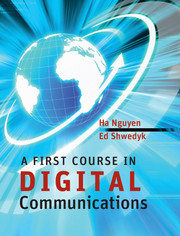Principles of Digital Communication
This comprehensive and accessible text teaches the fundamentals of digital communication via a top-down-reversed approach, specifically formulated for a one-semester course. The unique approach focuses on the transmission problem and develops knowledge of receivers before transmitters. In doing so it cuts straight to the heart of the digital communication problem, enabling students to learn quickly, intuitively, and with minimal background knowledge. Beginning with the decision problem faced by a decoder and going on to cover receiver designs for different channels, hardware constraints, design trade-offs, convolutional coding, Viterbi decoding, and passband communication, detail is given on system-level design as well as practical applications in engineering. All of this is supported by numerous worked examples, homework problems, and MATLAB simulation exercises to aid self-study, providing a solid basis for students to specialize in the field of digital communication and making it suitable for both traditional and flipped classroom teaching.
- Takes a top-down-reversed approach cutting straight to the heart of the communication problem
- Accessible and focused, it is ideal for a one-semester course
- Includes worked examples, homework problems, and MATLAB simulation exercises making it suitable for self-study and traditional or flipped classroom teaching
Reviews & endorsements
'This is an excellent introductory book on digital communications theory that is suitable for advanced undergraduate students and/or first-year graduate students, or alternatively for self-study. It achieves a nice degree of rigor in a clear, gentle, and student-friendly manner. The exercises alone are worth the price of the book.' Dave Forney, Massachusetts Institute of Technology
'[This] is a special and most attractive text … It is special in that it addresses the most basic features of digital communications in an attractive and simple way, thereby facilitating the teaching of these fundamental aspects within a single semester. This is done without compromising the required mathematical and statistical framework. This remarkable achievement is the outcome of many years of excellent teaching of undergraduate and graduate digital communication courses, by the author … All in all, this extremely well structured text is an excellent book for a first course on digital communications. It covers exactly what is needed and it does so in a simple and rigorous manner that the students and the tutor will appreciate. The achieved balance between theoretical and practical aspects makes this text well suited for students with either inclinations to an industrial or an academic career.' Shlomo Shamai, Technion, Israel Institute of Technology
'The Rimoldi text is perfect for a beginning mezzanine-level course in digital communications. The logical three-layer - discrete-time, continuous-time, passband - approach to the problem of communication system design greatly enhances understanding. Numerous examples, problems, and MATLAB exercises make the book both student and instructor friendly. My discussions with the author about the book's development have convinced me that it's been a labor of love. The completed manuscript clearly bears this out.' Dan Costello, University of Notre Dame
Product details
January 2016Hardback
9781107116450
269 pages
253 × 180 × 18 mm
0.76kg
124 b/w illus. 1 table 128 exercises
Available
Table of Contents
- 1. Introduction and objectives
- 2. Receiver design for discrete-time observations: first layer
- 3. Receiver design for the continuous-time AWGN channel: second layer
- 4. Signal design trade-offs
- 5. Symbol-by-symbol on a pulse train: second layer revisited
- 6. Convolutional coding and Viterbi decoding: first layer revisited
- 7. Passband communication via up/down conversion: third layer.

